Review for Onibaba (Masters of Cinema)
Introduction
It’s odd the little connections the brain can make on very little evidence. When the press release for Onibaba came across my e-mail inbox, I had a quick glance at it, and saw mention of soldiers, and women that weren’t what they appeared to be. My first thought was of a Clint Eastwood movie where he played a soldier in the US civil war, injured, and ‘rescued’ by a group of women. I also thought of how A Fistful of Dollars was a remake of Yojimbo. Of course, in reality Onibaba has not much at all to do with The Beguiled, but by the time I realised, I had the check disc in my hands, and a review to write. On the bright side, this is a Masters of Cinema release from Eureka, which takes some of the notable titles from cinema history, those films that were most influential and groundbreaking, if not exactly household names, and gives them stunning restorations and fitting extra features.
Onibaba is set during a period of war in Japan, where a mother and her daughter-in-law have been driven to desperate measures simply to survive. The method they’ve found at least keeps them fed, whereas farming in a war torn land, beset by capricious weather, and where any able-bodied man is forcibly conscripted does not. They live in concealment by a river, where the overgrown reeds mask their presence. It’s where soldiers are apt to stray, those fleeing battle, those struggling to survive their wounds, or those simply wishing to desert. From the concealment of the reeds, it’s a simple matter for the women to ambush them, and ‘help’ them on their way. While their lives are worthless, the armour that they wear, and the weaponry they bear is in much demand for all the new soldiers being conscripted for the war, and this armour is enough to keep the women fed.
Their problems begin when their neighbour Hachi returns alone having escaped the army he was conscripted into. It turns out that the old woman’s son who was with him, fell victim to a group of vengeful farmers. That changes the whole dynamic between the two women, especially for the new widow, who needs some male company, and the only prospective male in the vicinity is Hachi. The old woman sees a lucrative partnership dissolving, with her daughter-in-law likely to leave. She becomes determined to keep the two apart at any cost. Then one night, a masked samurai enters her hut.
Picture
Onibaba gets a 2.35:1 monochrome widescreen presentation on this Blu-ray disc at 1080p resolution. The image is clear and sharp throughout, with good contrast and excellent detail. Shadow levels are good, and the picture is stable throughout. There is a distinct layer of grain and a filmic flicker to the image, but print damage and signs of dirt and age are notably absent. It brings the film’s stunning cinematography across most pleasingly. In a film set amongst three metre high grasslands, next to an atmospherically shot river, there is always something going on in the frame. The slightest whisper of a breeze can fundamentally change the composition, and the film takes full advantage of its setting.
The images in this review are sourced from the PR material and aren’t representative of the final retail release.
Sound
The audio with this release is uncompressed PCM 2.0 Japanese, with optional English subtitles. The film’s sound is presented with clarity, the dialogue is audible throughout, and the startling music soundtrack also impresses. That said, with the degree of location filming, it’s understandable that a lot of dialogue was looped in ADR, and this process isn’t perfect at times, especially for foley work. Also, a sign of an older film no doubt, but the sound was on occasion distorted at higher volumes, especially when characters were speaking loudly.
Extras
A Masters of Cinema Blu-ray disc has one thing that really appeals to me, a quick loading menu. Just put the disc in, and it immediately loads a static menu screen with the film’s options. There’s no waiting and no fuss with the usual java nonsense.
The Alex Cox Introduction was filmed in 2005, no doubt for the DVD release of this film, and is presented here in HD format. He offers some background to the film and its director, and puts the film in context. This lasts 6 minutes.
There is 38 minutes worth of On-Set Footage here, presented in HD and shot in 8mm without audio by actor Kei Sato in the summer of 1964. It’s a look behind the scenes of the filming, and it’s best viewed after listening to the audio commentary to help put it in context. The odd text caption gets translated by a subtitle stream.
The audio commentary was recorded in 2000, and features actors Kei Sato (Hachi), and Jitsuko Yoshinawa (the young woman) along with director Kaneto Shindo. It’s a very informative retrospective of the film, subtitled of course, and is well worth reading. Not all comments are translated though.
You get the original trailer, running to just over 2 minutes on this disc, and in HD.
As well as the disc, you’ll get a 36 page booklet to go with the film. I didn’t get to see the actual booklet, but Eureka Entertainment kindly supplied a pdf file of the content. There is a review of the film from Doug Cummings, there is an essay on the film from director Kaneto Shindo written in 2004, an adaptation of the Buddhist fable that inspired the film, and an interview with Kaneto Shindo from 1972, along with several stills from the film.
Conclusion
When it was first released here, Onibaba was rated X, and censored by the BBFC, back when the C stood for Censorship and not Classification. Today, Onibaba is rated 15, but watching it you can still appreciate the intensity, the barely restrained eroticism uncomfortably mixed with brutal violence that would have so provoked the censors forty years ago. It is a monochrome masterpiece, a visual feast that grabs you with every frame. Yet I have to say that something about Onibaba left me cold.
For one thing, this is a film from a more oblique film-making ethic, where narrative is thin, and where imagery laced with metaphor is where the film’s message lies. There are many meanings within this film, and many meanings that can be ascribed to it. It helps to know something of the intent of the filmmaker, some idea of the world and the politics of the era in which the film was made, and in which the story is set. The world of 2013 is far removed from the politically charged and reactionary post-war era during which Onibaba was made. It helps very much to read the essays in the booklet that come with the disc, which help to put the film in context.
For me taking the film solely at face value, Onibaba was an interesting character study of people at their lowest ebb, where survival becomes paramount, and where morality and ethics lose their meaning. Set during a period of war, where the peasants, farmers and mere villagers were meaningless to powerful warlords more concerned with affairs of state, the average person had to do whatever it took to survive. For the mother and daughter-in-law in this film, where the men of the family are either dead or forcibly conscripted, and where villages and farmlands are razed as a matter of course by advancing or retreating armies, it’s become a matter of just finding enough food to eat. They hide in the grasslands where concealment is simple, and they pick off the stragglers and lost and wounded soldiers, killing them and selling off their armour and weapons for food.
When Hachi returns with the news that the old woman’s son is dead, it changes the dynamic between the two women. Newly widowed, the younger woman realises that she needs a man, and with Hachi the only local prospect, it isn’t long before the two are sneaking off for midnight trysts. For the older woman she not only sees her accomplice in murder potentially leaving, as well as the sole remaining member of her family, but she’s also reminded of her own physical needs. Fear combined with jealousy leads her to try and come between the two, and she’ll do whatever it takes to keep them apart, and keep the younger woman with her. In the end she resorts to supernatural means, threatening the younger woman with all manner of hellfire and damnation if she continues to sin. When the masked samurai appears, the solution becomes apparent, and the demoness of the title appears to strike fear into the younger woman. But donning the demon’s mask is a step too far.
Perhaps I have been conditioned by modern horror movies a little too much. There is a whole lot of build-up in Onibaba, a lot of character study and interaction, and a lot of charged atmosphere and poignant visuals. The final act with the demon mask and its effect on the younger woman is hastily established, and for me not explored to sufficient detail, and the coda to the film feels perfunctory and doesn’t settle in the mind.
Onibaba is a beautiful film, and exemplifies the power that exists in the monochrome image, where atmosphere, charged eroticism, and brutal violence can be conveyed by contrast, shadow and light in a way that no spectrum of colour can manage. It’s also a film that rewards those who do the work to appreciate it. It’s a film steeped with metaphor and hidden meaning, and it is also ripe for meaning to be ascribed to it. It’s a work of art, and like any work of art, you’ll know whether you like it or not. Eureka put together another very appealing Masters of Cinema release, with cracking image quality, and a selection of very appropriate extra features.


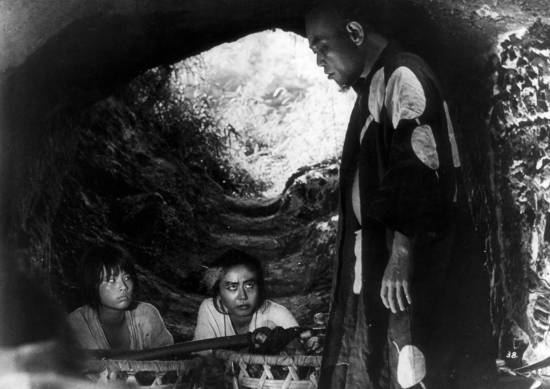
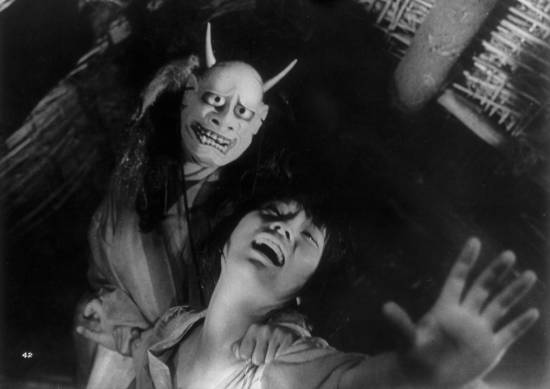
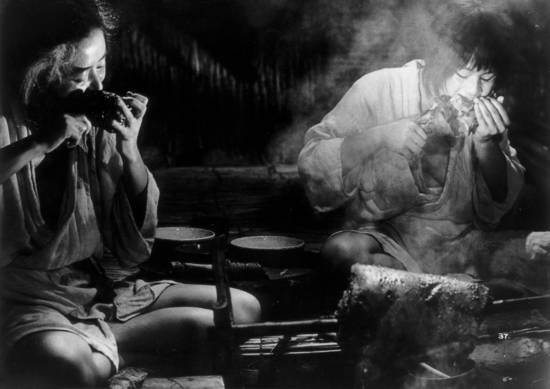
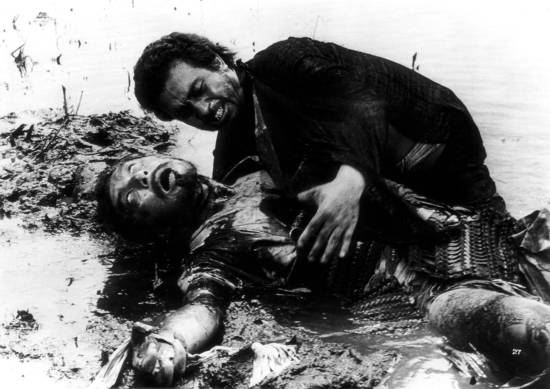
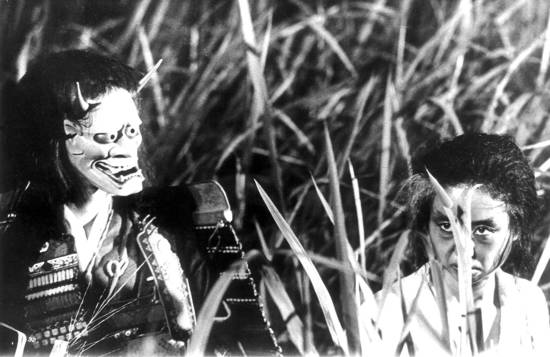
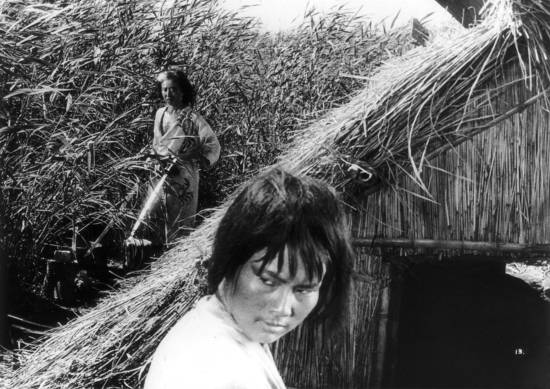
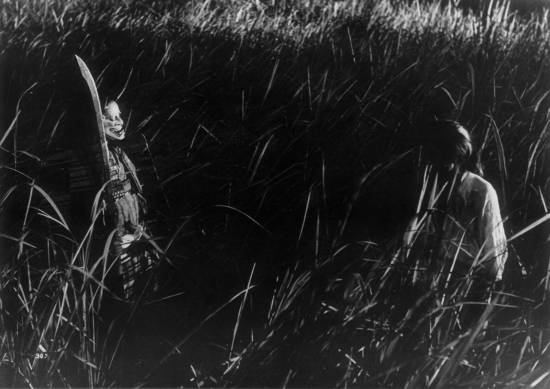

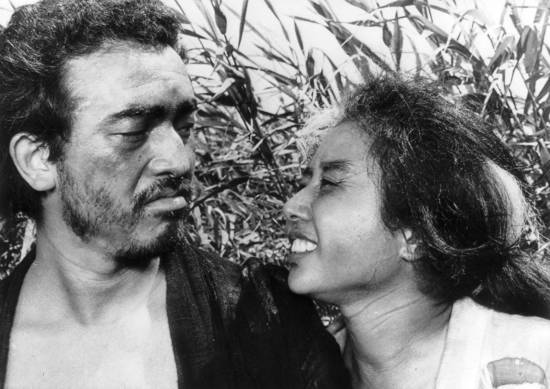
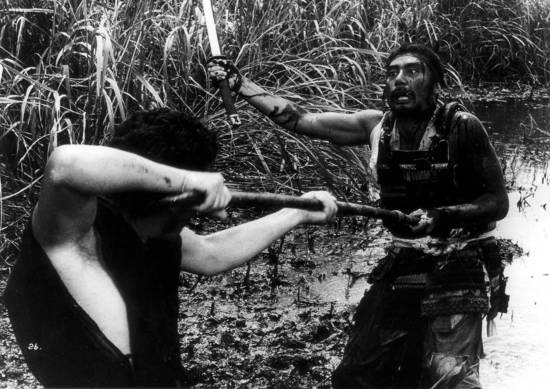

Your Opinions and Comments
Be the first to post a comment!